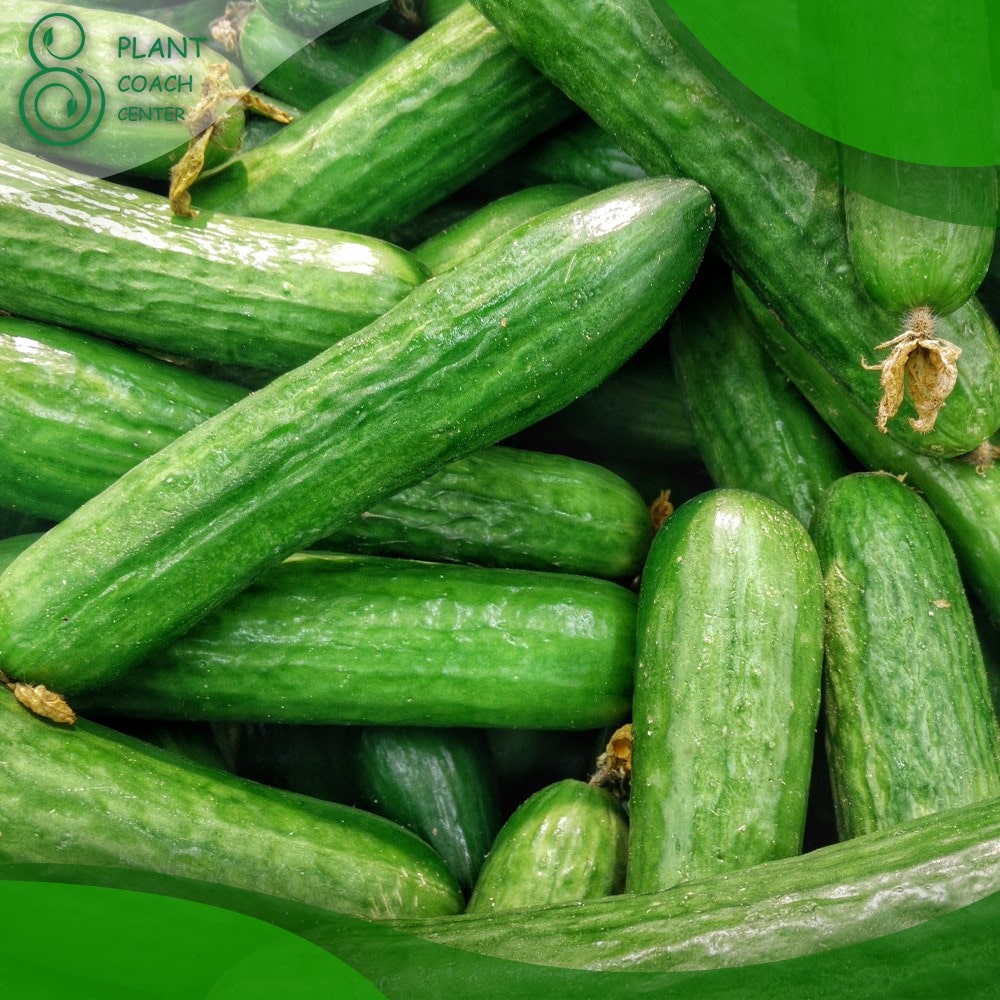When Can You Plant Cucumbers
Cucumbers are a popular vegetable that can be grown in many regions of the world. Whether you’re a seasoned gardener or just starting out, it’s important to know when to plant cucumbers to maximize your yield and ensure a healthy crop.
In this article, we’ll cover the optimal planting times for cucumbers, as well as the factors to consider when planting and caring for your cucumber plants.
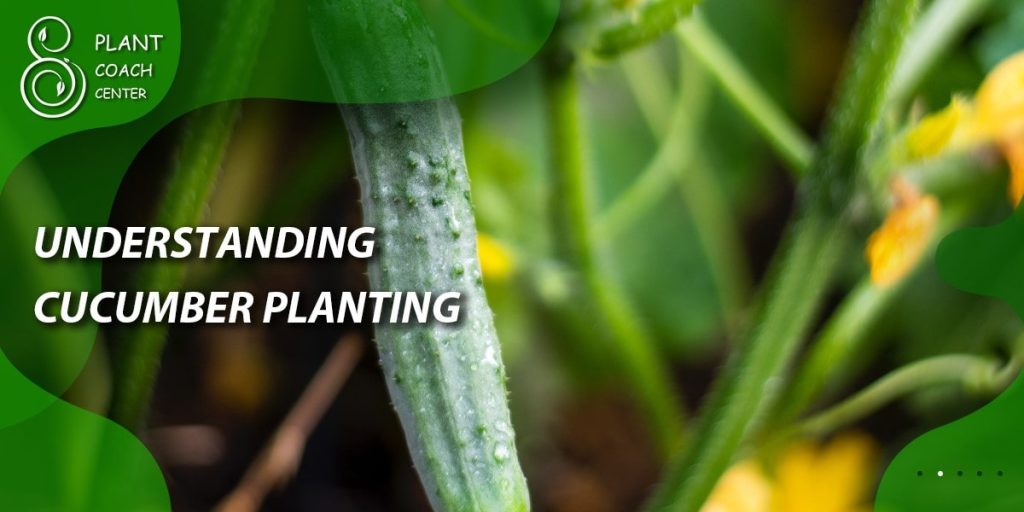
Understanding Cucumber Planting
Before we get into the specific timing of cucumber planting, it’s important to understand the factors that can affect the success of your crop. Here are some key considerations when planting cucumbers:
Soil Requirements for Cucumbers
Cucumbers grow best in well-draining, fertile soil with a pH of 6.0 to 7.0. The soil should also be rich in organic matter to provide nutrients and retain moisture. If your soil is heavy or clay-like, consider amending it with compost or other organic matter to improve its structure.
Climate and Temperature Requirements for Cucumbers
Cucumbers are warm-weather plants that require a minimum temperature of 60°F (15°C) to germinate and grow. They can be sensitive to frost and cold soil, so it’s important to wait until the soil has warmed up before planting.
In general, cucumbers prefer daytime temperatures between 70°F and 90°F (21°C to 32°C) and nighttime temperatures between 60°F and 70°F (15°C to 21°C).
Sunlight Requirements for Cucumbers
Cucumbers need plenty of sunlight to grow and produce fruit. They should receive at least 6 to 8 hours of direct sunlight each day. If you’re planting cucumbers in a location with partial shade, make sure they still receive plenty of morning sun to help dry dew from the leaves and prevent disease.
When to Plant Cucumbers
The optimal planting time for cucumbers will depend on several factors, including your location, climate, and the specific variety of cucumber you’re planting. Here are some general guidelines for when to plant cucumbers:
Planting Cucumbers in Different Regions
Cucumbers can be grown in many regions of the world, but the optimal planting time will vary depending on your location. Here’s a breakdown of when to plant cucumbers in different regions:
– Northern regions: If you’re planting cucumbers in a northern region with a short growing season, it’s best to wait until the soil has warmed up and the danger of frost has passed. Plant cucumbers in late May or early June for the best results.
– Southern regions: If you’re planting cucumbers in a southern region with a long growing season, you can plant them earlier in the year. In warmer regions, you can plant cucumbers as early as March or April.
– Coastal regions: If you’re planting cucumbers in a coastal region, the weather can be cooler and wetter in the spring. Wait until the soil has warmed up and the risk of frost has passed before planting cucumbers.
Optimal Planting Times for Cucumbers
In general, the optimal planting time for cucumbers is when the soil has warmed up to at least 60°F (15°C) and the danger of frost has passed. Here are some more specific guidelines for planting cucumbers:
– Direct seeding: If you’re planting cucumbers directly in the soil, wait until the soil temperature has reached at least 60°F (15°C). You can use a soil thermometer to measure the temperature at a depth of 4 inches (10 cm). In most regions, this will be in late spring or early summer.
– Transplanting: If you’re transplanting cucumber seedlings, wait until the seedlings have at least two true leaves and the risk of frost has passed. In most regions, this will be in late spring or early summer.
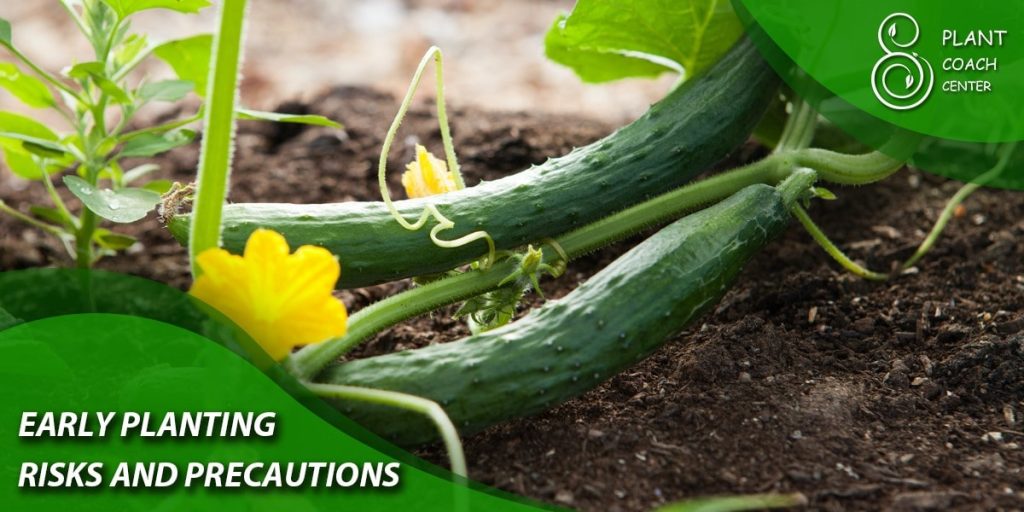
Early Planting Risks and Precautions
Planting cucumbers early in the season can help you get a head start on your crop, but it also carries some risks. Here are some precautions to take if you’re planting cucumbers early:
– Protective measures: Covering your plants with row covers or cloths can help protect them from cold temperatures and frost damage.
– Choose early varieties: Choosing early-maturing cucumber varieties can help reduce the risk of damage from cold temperatures.
– Use raised beds: Planting cucumbers in raised beds can help warm the soil more quickly in the spring.
Delayed Planting Due to Weather
If the weather is cooler or wetter than usual, it may be necessary to delay planting cucumbers. Here are some tips for dealing with delayed planting:
– Choose heat-tolerant varieties: Choosing heat-tolerant cucumber varieties can help ensure a successful crop, even in warmer weather.
– Provide extra water: During periods of hot weather, make sure your cucumber plants receive enough water to prevent them from wilting.
– Provide shade: If the weather is exceptionally hot, you may need to provide shade for your cucumber plants to prevent them from getting sunburned.
Cucumber Planting Problems and Solutions
Even with the best planning and preparation, problems can still arise when planting cucumbers. Here are some common problems and solutions:
– Damping off: Damping off is a fungal disease that can kill young cucumber plants. To prevent damping off, make sure to use sterile soil and containers, and avoid overwatering.
– Poor germination: If your cucumber seeds aren’t germinating well, it could be due to low soil temperature or poor soil conditions. Make sure the soil is warm enough and has adequate nutrients.
– Insect pests: Cucumber plants can be susceptible to insect pests such as cucumber beetles and aphids. Use insecticidal soap or other organic pest control methods to prevent damage.
By understanding the factors involved in cucumber planting and following the guidelines for optimal planting times, you can ensure a successful crop and enjoy the delicious taste of fresh cucumbers all season long. In the next section, we’ll cover the care and maintenance of cucumber plants, including watering, fertilizing, and pest control.
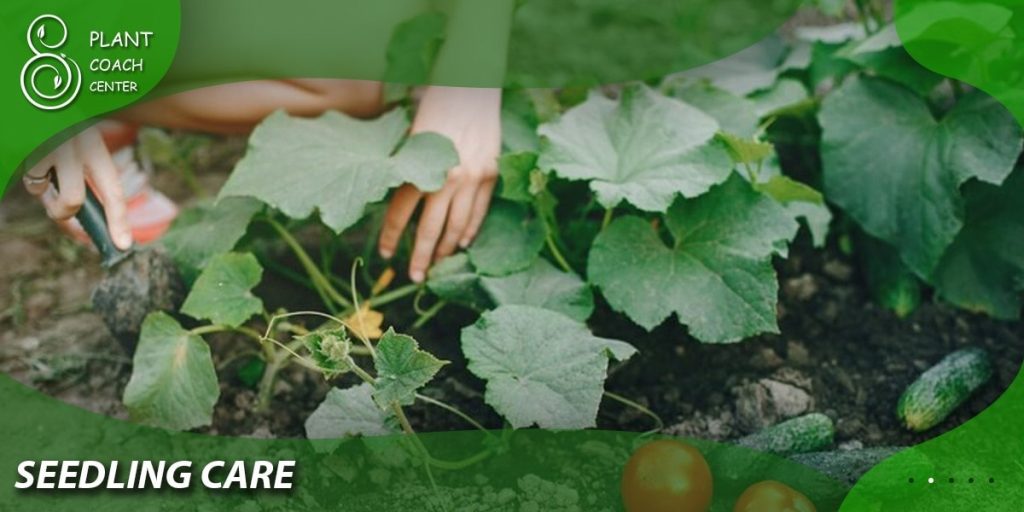
Seedling Care
Once you’ve planted your cucumber seeds or transplanted your cucumber seedlings, it’s important to take care of them to ensure they grow into healthy plants. Here are some tips for caring for your cucumber seedlings:
Preparing Cucumber Seeds for Planting
Before planting your cucumber seeds, there are a few steps you can take to improve their germination rate and overall health:
– Soak the seeds: Soaking cucumber seeds in water for a few hours before planting can help soften the seed coat and improve germination.
– Use seed starter mix: Using a high-quality seed starter mix can provide the nutrients and moisture that cucumber seeds need to germinate.
– Keep the soil moist: Cucumber seeds need to be kept moist to germinate, but not too wet. Water the soil regularly, but don’t let it become waterlogged.
Caring for Cucumber Seedlings
Once your cucumber seeds have germinated and the seedlings have emerged, it’s important to continue caring for them to ensure they grow into healthy plants:
– Provide plenty of light: Cucumber seedlings need plenty of light to grow. If you’re growing them indoors, make sure they receive at least 12 to 16 hours of light per day. If you’re growing them outdoors, make sure they receive plenty of direct sunlight.
– Water carefully: Cucumber seedlings need to be watered regularly, but not overwatered. Make sure the soil stays moist, but not waterlogged.
– Fertilize sparingly: Cucumber seedlings don’t need much fertilizer at first. Wait until they have at least two true leaves before applying a diluted fertilizer.
Transplanting Cucumber Seedlings
If you’re starting cucumber seeds indoors, you’ll need to transplant the seedlings into the garden once they’re large enough. Here are some tips for transplanting cucumber seedlings:
– Harden off the seedlings: Before transplanting cucumber seedlings, it’s important to harden them off by gradually exposing them to outdoor conditions over a period of several days.
– Choose a good location: Choose a location in the garden that receives plenty of sunlight and has well-draining soil.
– Plant at the right depth: When transplanting cucumber seedlings, make sure to plant them at the same depth they were growing in the seed tray.
– Water well: After transplanting cucumber seedlings, water them well to help them adjust to their new environment.
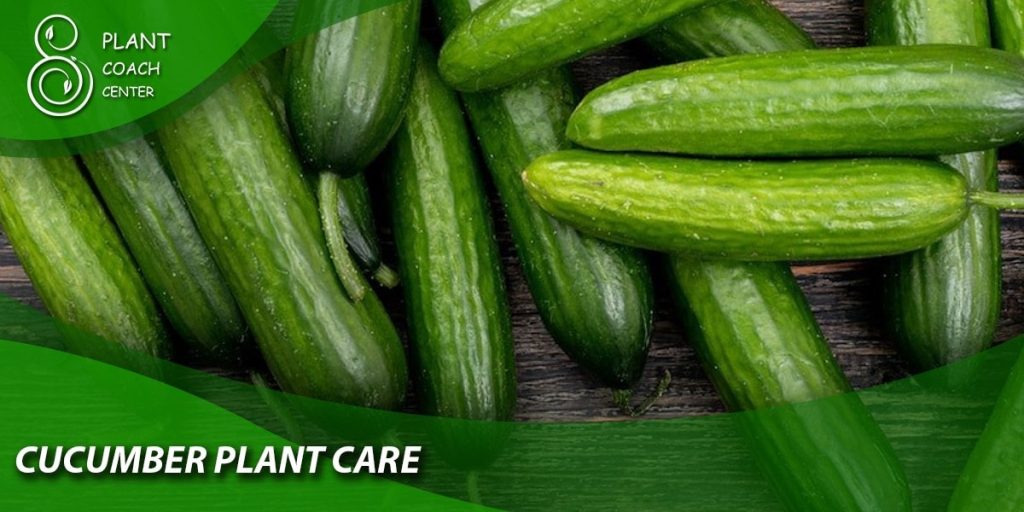
Cucumber Plant Care
Once your cucumber plants are established, it’s important to continue caring for them to ensure they grow and produce healthy fruit. Here are some tips for caring for your cucumber plants:
Watering Cucumber Plants
Cucumber plants need regular watering to stay healthy and produce fruit. Here are some tips for watering cucumber plants:
– Water deeply: When watering cucumber plants, make sure to water deeply to encourage the roots to grow deeper into the soil.
– Water in the morning: Watering cucumber plants in the morning can help prevent the leaves from getting wet and reduce the risk of disease.
– Use a soaker hose or drip irrigation: Using a soaker hose or drip irrigation system can help conserve water and deliver it directly to the roots of the plants.
Fertilizing Cucumber Plants
Cucumber plants need regular fertilization to provide the nutrients they need to grow and produce fruit. Here are some tips for fertilizing cucumber plants:
– Use a balanced fertilizer: Choose a balanced fertilizer with equal amounts of nitrogen, phosphorus, and potassium.
– Apply fertilizer sparingly: Cucumber plants don’t need a lot of fertilizer at once. Apply a small amount of fertilizer every two to three weeks.
– Avoid overfertilization: Overfertilizing cucumber plants can cause them to produce too many leaves and not enough fruit.
Trellising and Pruning Cucumber Plants
Trellising and pruning cucumber plants can help improve air circulation, reduce disease, and increase yield. Here are some tips for trellising and pruning cucumber plants:
– Choose a trellis system: There are many different types of trellis systems you can use for cucumber plants, including A-frames, teepees, and vertical trellises.
– Train the vines: As the cucumber plants grow, train the vines to climb the trellis by gently wrapping them around the support structure.
– Prune the side shoots: Removing the side shoots from the cucumber plants can help improve air circulation and reduce disease.
Controlling Pests and Diseases in Cucumber Plants
Cucumber plants are susceptible to a variety of pests and diseases, including cucumber beetles, aphids, powdery mildew, and downy mildew. Here are some tips for controlling pests and diseases in cucumber plants:
– Use organic pest control methods: Avoid using chemical pesticides on your cucumber plants. Instead, use organic pest control methods such as insecticidal soap, neem oil, or row covers.
– Monitor regularly: Regularly inspect your cucumber plants for signs of pests or disease, and take action as soon as you notice a problem.
– Rotate crops: Avoid planting cucumbers in the same location year after year, as this can increase the risk of disease. Rotate your crops to a different location each year.
– Remove infected plants: If you notice a cucumber plant that is infected with disease, remove it immediately to prevent the disease from spreading to other plants.
By following these tips for caring for your cucumber plants, you can help ensure a healthy and productive crop. With a little bit of planning and care, you can enjoy the delicious taste of fresh cucumbers all season long.
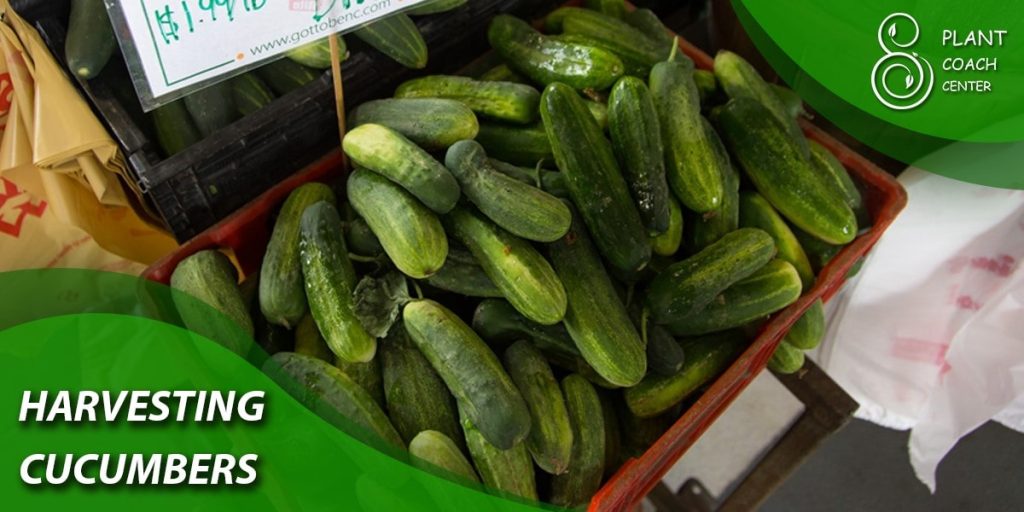
Harvesting Cucumbers
Once your cucumber plants start producing fruit, it’s important to harvest them regularly to encourage more fruit production. Here are some tips for harvesting cucumbers:
– Check plants daily: Check your cucumber plants daily for ripe fruit. Cucumbers can grow quickly, so it’s important to harvest them before they become overripe.
– Harvest when ripe: Harvest cucumbers when they are firm, green, and have reached their mature size. Don’t wait too long to harvest, as overripe cucumbers can become bitter and tough.
– Use pruning shears: Use pruning shears to cut the cucumber from the vine, rather than pulling it off by hand. This can help prevent damage to the plant.
– Harvest in the morning: Harvest cucumbers in the morning when they are at their most crisp and flavorful.
– Store properly: Store cucumbers in the refrigerator to keep them fresh. They will keep for up to a week if stored properly.
Common Problems with Cucumber Plants
Cucumber plants can be susceptible to a variety of problems, including pests, diseases, and environmental issues. Here are some of the most common problems you may encounter when growing cucumbers:
Cucumber Beetles
Cucumber beetles are small, striped beetles that can cause significant damage to cucumber plants. They can transmit diseases and cause the leaves to wilt. Here are some tips for controlling cucumber beetles:
– Use row covers: Cover your cucumber plants with row covers to prevent cucumber beetles from accessing them.
– Use insecticidal soap: Spray your cucumber plants with insecticidal soap to kill cucumber beetles.
– Handpick: If you only have a few cucumber plants, you can handpick the beetles and remove them from the plants.
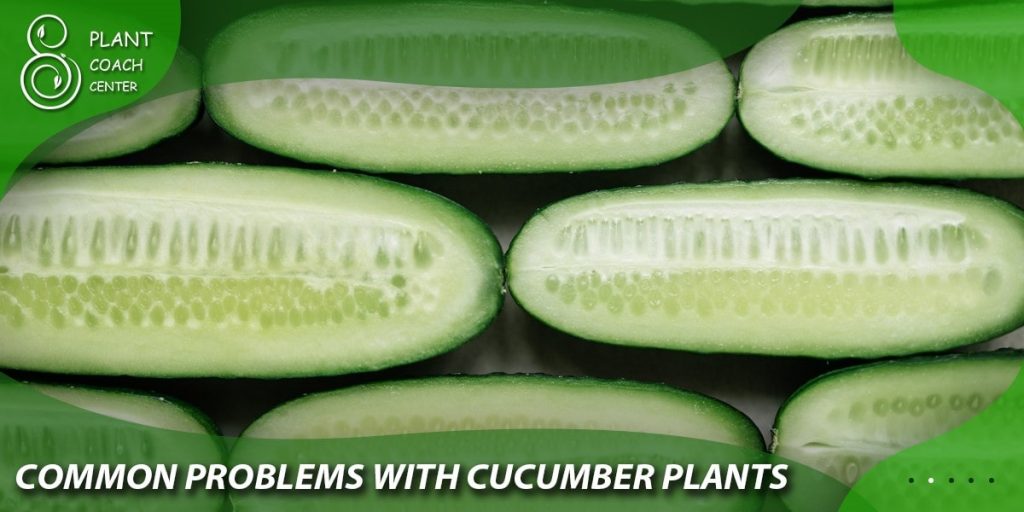
Powdery Mildew
Powdery mildew is a fungal disease that can cause a white, powdery coating on the leaves of cucumber plants. It can reduce yield and weaken the plant. Here are some tips for controlling powdery mildew:
– Improve air circulation: Increase air circulation around your cucumber plants to prevent powdery mildew from taking hold.
– Use a fungicide: Apply a fungicide to your cucumber plants to kill powdery mildew.
– Remove infected leaves: If you notice powdery mildew on your cucumber plants, remove infected leaves immediately to prevent the disease from spreading.
Blossom End Rot
Blossom end rot is a common problem with cucumbers and other fruits and vegetables. It is caused by a calcium deficiency and can cause the bottom of the fruit to turn brown and mushy. Here are some tips for preventing blossom end rot:
– Maintain consistent watering: Inconsistent watering can cause calcium uptake problems in cucumber plants. Make sure to water your plants regularly and deeply.
– Add calcium to the soil: Add calcium to your soil by adding crushed eggshells or agricultural lime to the soil.
– Monitor soil pH: Cucumber plants prefer a soil pH of 6.0 to 6.8. Monitor your soil pH regularly and adjust if necessary.
By being aware of these common problems and taking steps to prevent and control them, you can help ensure a healthy and productive cucumber crop. With a little bit of care and attention, you can enjoy fresh cucumbers all season long!
Conclusion
Cucumbers are a delicious and nutritious vegetable that can be grown in a variety of settings, from small containers to large gardens. By following the tips in this guide, you can successfully grow your own cucumbers and enjoy fresh, flavorful produce all season long.
Remember to choose the right variety for your situation, prepare the soil properly, and provide your plants with the right amount of light, water, and nutrients. Be vigilant for pests and diseases, and take steps to prevent and control them as necessary. And don’t forget to harvest your cucumbers regularly to encourage more fruit production.
Whether you’re a seasoned gardener or a first-time grower, growing cucumbers is a fun and rewarding experience. With a little bit of effort and care, you can enjoy the taste of fresh cucumbers straight from your own garden.
When should I plant cucumbers?
Cucumbers should be planted after the danger of frost has passed and the soil has warmed up, typically in late spring or early summer.
Can cucumbers tolerate cold temperatures?
Cucumbers are sensitive to cold temperatures and frost, so it's important to wait until the soil and air temperatures are consistently warm before planting them.
Can I start cucumbers indoors before planting them outside?
Yes, you can start cucumbers indoors 3 to 4 weeks before the last frost date in your area to get a head start.


